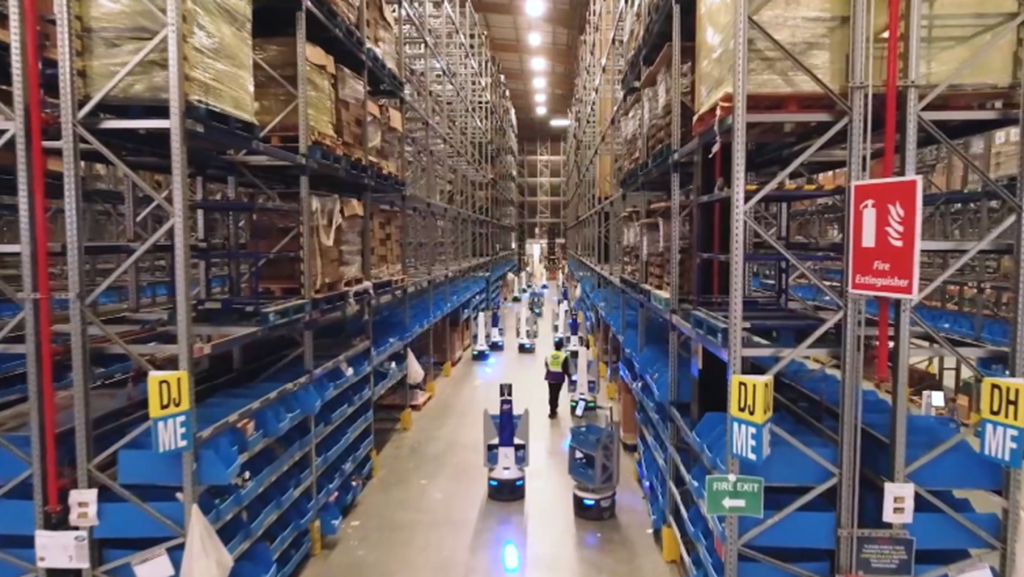
Warehouse storage has evolved significantly, growing in complexity over the years. Today, facilities have access to a diverse range of options for handling and storing goods. However, selecting the most appropriate storage solution for your specific situation can be a daunting task. In this article, we will outline 10 distinct types of storage solutions and systems, encompassing both traditional and automated alternatives. Our aim is to provide you with a comprehensive overview, enabling you to make more informed decisions about the systems that best align with your operational needs.
Traditional Storage
1. Traditional Shelving
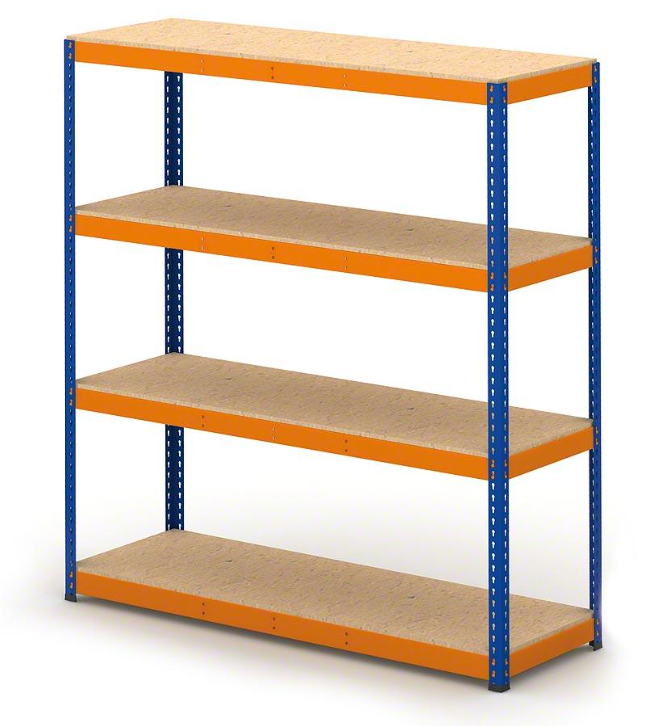
Shelving represents one of the most traditional forms of storage, often coming to mind when people think of storage options. Shelving can be categorized as static or mobile.
Static shelving is designed to remain stationary, typically in the location where it was initially installed. Static shelving naturally creates fixed aisles within the warehouse layout. On the other hand, mobile shelving is intentionally designed to move. It is commonly mounted on a system of carriages and wheels, allowing for mobility. Mobile shelving has the advantage of reducing or even eliminating the need for fixed aisles, enabling denser storage configurations. Each type of shelving serves a specific purpose within an operational context.
Shelving is a versatile storage solution found in many facilities and is often a cost-effective way to store small parts and goods efficiently.
2. Carton Flow Racks
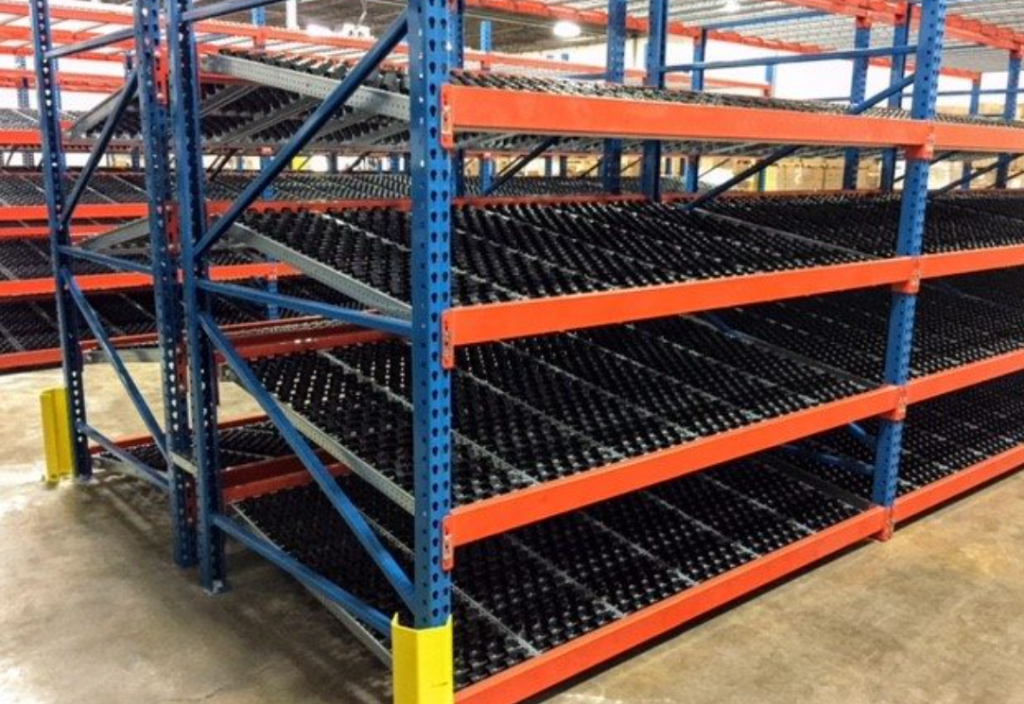
Carton flow racks are a specialized type of racking system tailored to accommodate products, usually at the carton level, which explains their name. These shelves are ingeniously designed with a slight slope. As a result, when the front carton is taken from the rack, this incline causes the next carton to smoothly roll forward, filling the space previously occupied by the removed carton.
Carton flow racks find their ideal application in situations involving fast-moving items or where a first-in/first-out (FIFO) inventory management strategy is essential. They shine brightest in facilities that deal with a high volume of small-sized goods. Carton flow enables more picks per hour to reduce labor costs.
3. Wire Partitions
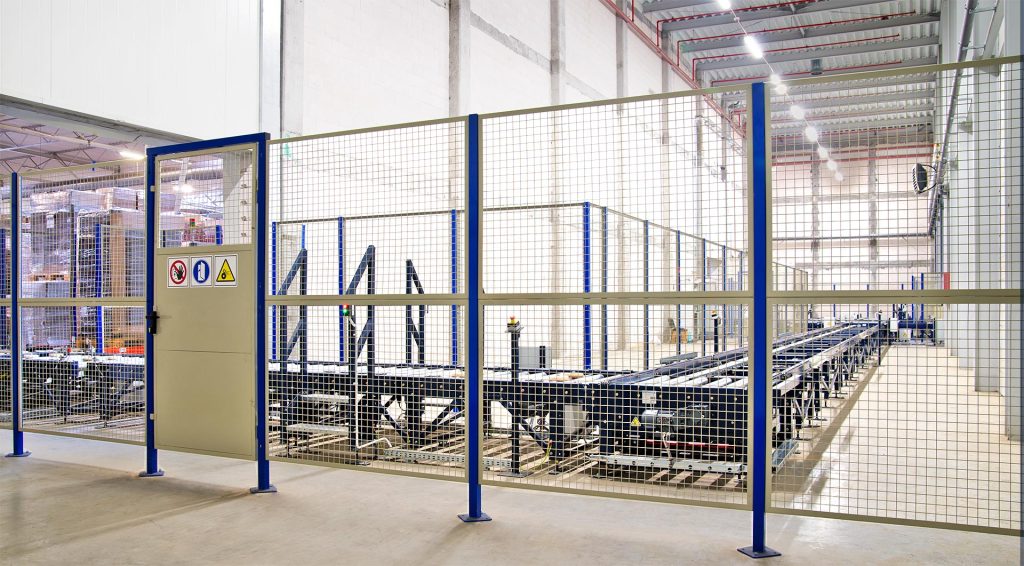
Wire partitions serve more as a security-oriented system rather than a storage solution. Wire partitions are essentially wire cages that are strategically placed within an operation to secure inventory, prevent unauthorized visitors, protect goods, and meet regulations (ex. DEA-certified cages). They are known for their quick installation and removal, making them an excellent choice when time is a critical factor. Due to their design, wire partitions are frequently used to contain large or irregularly shaped items, such as tires or balls. They are often paired with wire mesh fences to create boundaries and enhance security for inventory within a facility.
Wire partitions are best well-suited for securing and separating large, irregularly shaped goods or for delineating inventory storage areas from other parts of a facility.
4. Pallet Racking Systems
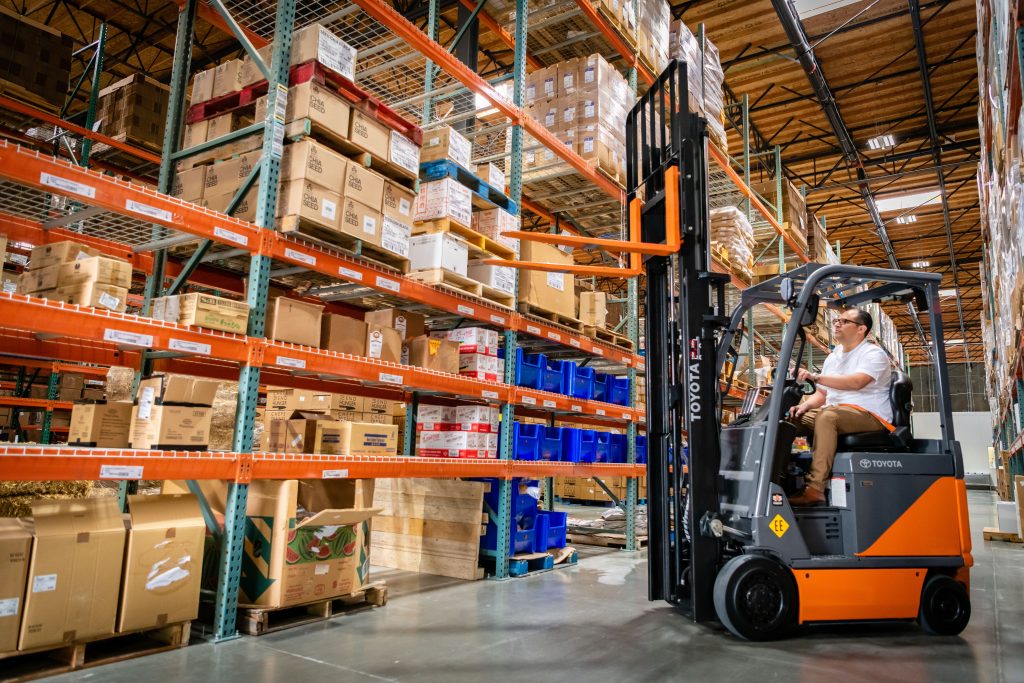
Pallet racking systems are specialized racks designed for the storage of pallets containing inventory. Typically, inventory is loaded onto and retrieved from these racks using forklifts or automated machinery.
These systems find their primary application in large, high-throughput operations where efficient storage is crucial. They excel in maximizing storage density, minimizing unused or wasted space, and effectively utilizing vertical storage capacity within a facility. Pallet racking systems can also be customized or combined with other storage solutions to create various configurations, such as push-back racks, pick tunnels, pallet flow racks, or pallet rack carts.
Pallet racking systems are prevalent across industries and facilities, often serving as the default storage solution for palletized goods. However, it’s worth noting that while they are versatile, they may not always provide the most efficient use of available space in every situation.
5. Mezzanines
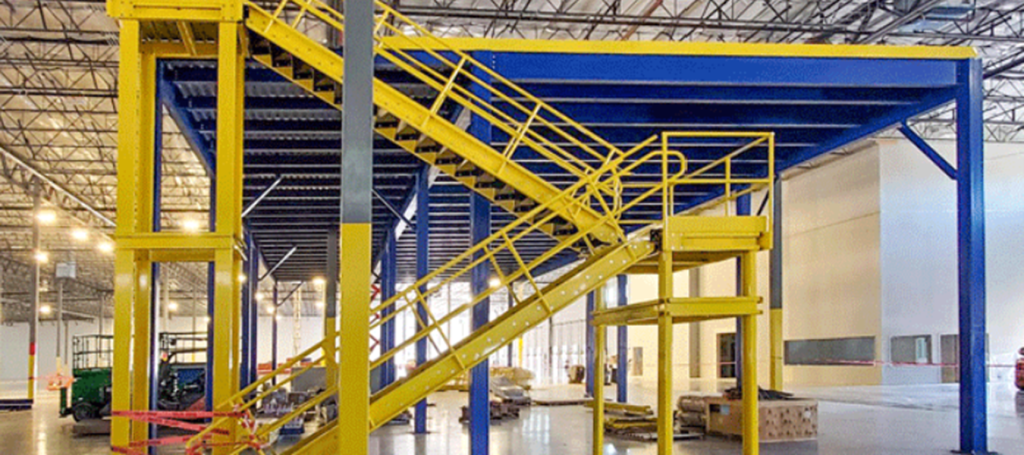
A mezzanine serves as an additional level of warehouse space constructed within your existing facility. Think of it as adding an extra floor (or multiple floors) inside your warehouse, effectively expanding the usable space available for storage and various activities.
A mezzanine’s purpose is to utilize the unused air space above a production area to double production or gain storage on that level. The costs of the mezzanine are justified compared to the cost of an extension of the current facility, a 3PL outsourcing, or a lease on another building. The Summit Handling Warehouse Solutions Group is available to evaluate your situation to determine the right fit with the best R.O.I.
Automated Storage
1. ASRS
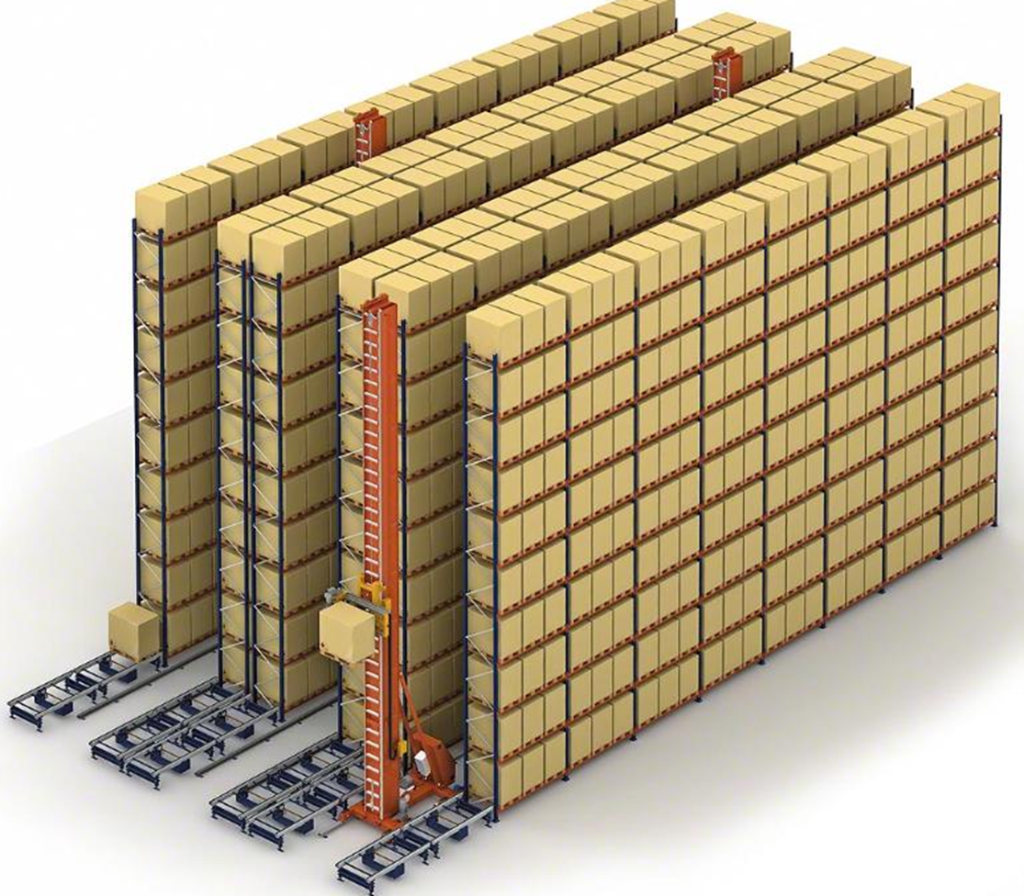
An Automated Storage and Retrieval System (ASRS) comes in many forms to suit the specific need and maximizes either pallet storage space or greater picking efficiency through automation for storing and retrieving goods within your facility. ASRS operates by storing pallets in a highly dense racking system, where automated retrieval robots manage the storage and retrieval of the required pallets. This innovative racking system effectively utilizes both vertical and horizontal space, ensuring that robots can access every pallet within the system. ASRS systems are available in various sizes and configurations to accommodate the storage needs of different types of goods.
ASRS can be integrated as a standalone module within an existing warehouse, or you can design your entire warehouse layout around an ASRS system from the outset.
ASRS systems are particularly well-suited for facilities that handle a significant volume of goods, which need to be stored for a medium to long duration, or in facilities seeking to maximize their available storage space efficiently.
2. Pick Modules
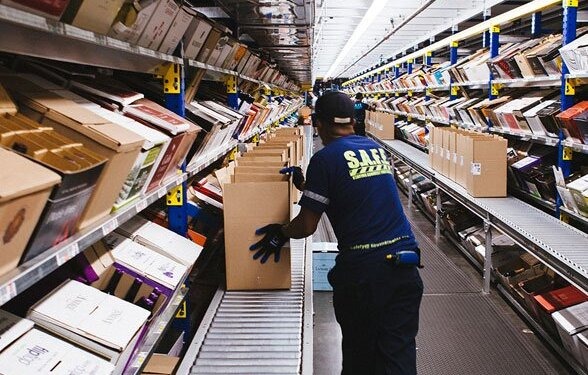
Pick modules integrate traditional racking systems, conveyor belts, and multi-story structures to optimize the efficiency of goods flow, picking efficiency, and vertical space. Their strength lies in superior space utilization, enabling the dynamic storage and retrieval of multiple SKUs of varying sizes and shapes throughout your facility. Pick modules are most effective in facilities with a diverse range of SKUs required for pallet assembly, as they can efficiently retrieve goods from various locations and consolidate them into a single location.
Pick modules serve as an ideal solution for operations that need to assemble or disassemble pallets containing many different SKUs.
3. Carousels

Carousels represent an efficient “goods-to-person” storage solution, designed for storing smaller and lighter products on movable vertical or horizontal shelves to optimize space utilization and enhance operational efficiency. These carousels offer an excellent means of efficiently storing a wide range of diverse SKUs or parts within a limited footprint. Carousels are available in various configurations tailored to accommodate the shapes and sizes of the items they are intended to store.
Carousels can serve as a valuable addition to any facility or parts department, particularly when there is a need to store small, loose parts or goods. Carousels are usually configured in groups of two or three units as a picking module. One operator can pick 150 to 250 picks per hour. How many picks per hour are your pickers doing?
4. Vertical Lift Modules
Vertical Lift Modules (VLMs) are a type of Automated Storage and Retrieval System (ASRS) that utilizes a high-density, compact unit with an extraction device positioned between two rows of stored goods. When a request is made, the extraction device retrieves the requested items with a simple push of a button and brings them to an opening at the end of the module for easy retrieval. VLMs are specifically designed to maximize vertical storage space utilization, thereby allowing you to optimize your warehouse storage capacity while reducing labor costs through automated storage and retrieval processes.
VLMs are particularly well-suited for facilities that handle a wide range of different SKUs and require the efficient picking of multiple SKUs for individual orders. They are also an excellent choice for facilities seeking to streamline their operations, saving both time and labor when it comes to storing and retrieving goods. VLMs are usually configured in groups of two or three units as a picking module. One operator can pick 250 to 350 picks per hour. How many picks per hour are your pickers doing?
5. Autonomous Mobile Robot

Autonomous Mobile Robots (AMRs) represent a cutting-edge approach to goods storage and retrieval that offers increased flexibility. AMRs are essentially robots capable of autonomously picking and storing products within your facility, eliminating the need for extensive facility redesign. They rely on cameras and warehouse management software to determine the precise locations of requested goods within your facility and navigate to retrieve or store them efficiently. Depending on the type of goods, AMRs can pick up multiple items in the shortest path before returning to the designated discharge area. This technology allows for substantial labor cost savings and can seamlessly operate with multiple racking or shelf levels containing a large variety of SKUs.
AMRs are an excellent choice for facilities seeking to automate labor processes without the need for extensive facility overhauls. They are compatible with various traditional storage systems, making them a versatile solution for optimizing warehouse operations.
Warehouse handling and storage indeed present ongoing challenges, especially as the demand for efficient material handling continues to grow. We trust that the solutions and systems detailed above have provided you with valuable insights into selecting the most suitable storage solutions or systems for your facility. It’s essential to keep in mind that there is no universally applicable solution, and combining multiple solutions can often yield the most effective results.
If you require assistance in determining the optimal solution or system for your facility, we encourage you to reach out to Summit’s warehouse solutions experts for a complimentary consultation. We are committed to helping you navigate your options and find the most efficient solution tailored to your specific requirements.
